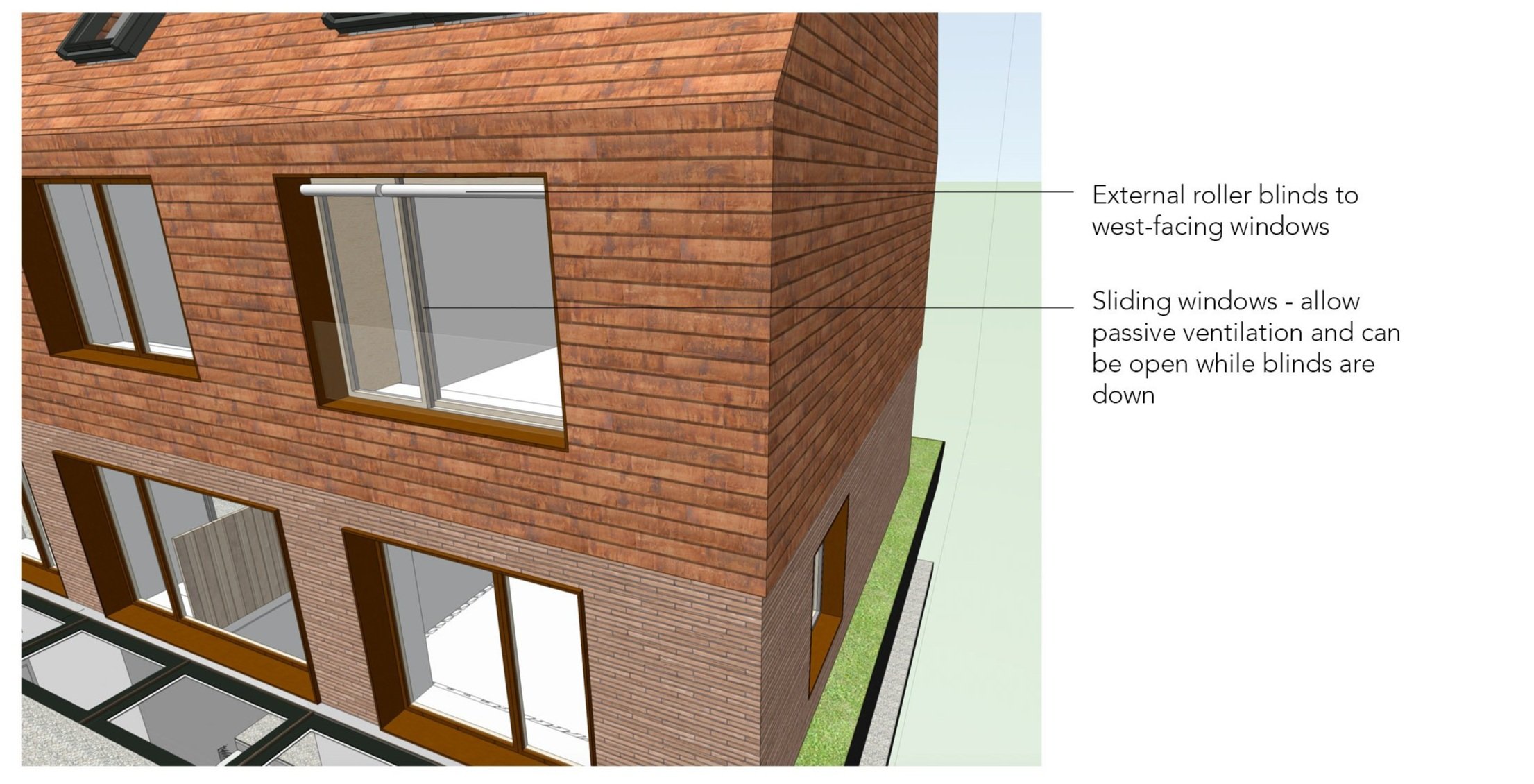Cooling Off: Passive and Active approaches to cooling on a retrofit project
One the key elements of the brief provided to us on a recent project was the need to address the potential for overheating. With the help of an energy consultant, we undertook a Dynamic Overheating Assessment – this is detailed analysis of the 3D model which allows us to understand how the building will perform.
Due to a large proportion of west-facing glass on the existing building, it was concluded that the afternoon sun was going to create the potential for overheating in a heatwave / predicted future climate scenario. We were also proposing skylights to the extension and loft conversion which can create unwanted solar gains.
The first way in way in which we proposed to address the problem is by using a ‘passive’ approach – external roller blinds. These are common in Europe and are becoming more popular in the UK. For most of the year, these are rolled up, out of sight above the windows. When required, translucent fabric rolls down over the windows, reducing solar gain while still allowing a view out. Sliding windows allow the windows to be open while the blinds are down, allowing passive ventilation. On the roof, the Velux Cabrio skylights are protected with proprietary external anti-heat blinds.
A further step that is being taken is active cooling. We normally aim to create buildings where this is not required, but the client wanted to ensure they were covered for all eventualities. We suggested including a mini-split air conditioning system. Unlike traditional air-conditioning, which has either the familiar ugly external units or ductwork running through the house, a mini-split system is powered by a remotely located external unit which can be positioned out of view. It’s connected with pipework, making it ideal for retrofits. It works in the same way as an air-source heat pump, meaning that on a hot summer’s day electricity generated by PV panels can be used to cool the building.
Written by Dave Ashton.

